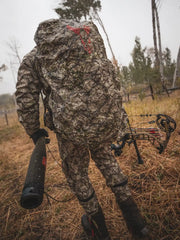With Independence Day just around the corner, our thoughts turn to the things we love about this country. Tough trucks, wide open spaces and the new season of the Bearded Buck are just a few things we love.
Sure, there are some things we can do better as a nation, like lowering taxes, keeping people from stealing Amazon boxes off our porch and eliminating the designated hitter from baseball. But today we want to focus on the things that we’ve done right.
One of these things, and one of the most important if you ask us, is the North American Model of Hunting. It’s distinctly American and it’s been a runaway success. In fact, it’s been such a success many nations around the world have adopted it to help eliminate human/animal problems, safeguard hunters’ rights and help increase the overall population and health of game animals.
Most of you already understand the next paragraph, but it’s in here for those few who may have just cocked their heads at the screen and wondered “How does hunting help increase game populations?”
After early settlers practically wiped out several species, including the plains bison, conservation-minded people all got together and began looking for ways to protect their ability to hunt, without eradicating an entire species in the process. By regulating the taking of wild game, the NA Model has created an incentive for states to allow hunters to harvest animals. Sometimes this incentive is in helping control unhealthy populations, but there’s also a financial incentive. States with smartly managed wildlife programs tend to be the best states for hunting, which means more tags purchased. In short, there are lots of reasons to make sure the population of elk in Colorado stay strong and healthy.
Now that we have that out of the way, let’s jump back to the start.
Beginning in 1918 with the Migratory Bird Treaty Act, the North American Model was created over the next four decades, culminating in the Federal Sportfish Restoration Act of 1950. These handful of bills established the current system in place today.
So, what exactly is the NA Model? We actually started to write up all the details and what it means, when our eyes glazed over and we woke up two days later on a Salt Lake City bus riding laps around the airport. We still don’t know where our boots went.
The best and shortest explanation we’ve found is from our friends at the U.S. Fish & Wildlife Service. Go ahead, click on over. We’ll wait.
Thanks to this effort, we can sit back and appreciate that there are 50 state agencies filled with dedicated and concerned biologists whose sole mission is to make sure we have fields of speed goats, hillsides of deer, and valleys of elk for generations to come. We don’t have to worry that we’ve seen the last of the wapiti bugling in the Uintas.
Sure, you could celebrate America just for being the land of the free and the home of the brave (which it is). But while you’re doing that, maybe between hot dogs and bottle rockets, take a moment to thank the generation's past that were wise enough to protect our wildlife so that we can enjoy it and pass it along to our kids, grandkids and that one weird nephew who’s always picking his nose.
Our forefathers put a lot of thought and effort into ensuring our ability to hunt. So, let’s celebrate the hunt by telling your brother-in-law about that massive muley you just missed last season. He really didn’t seem to fully grasp the magnitude of the 7-point buck the first 23 times you told him.















